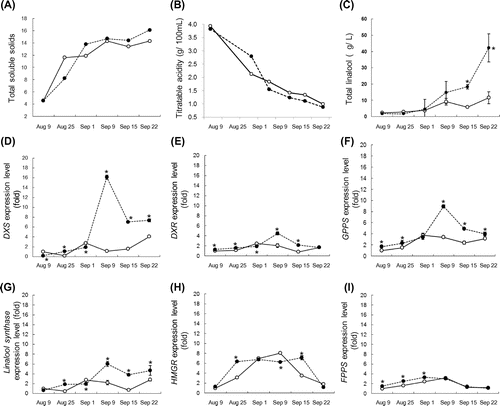Figures & data
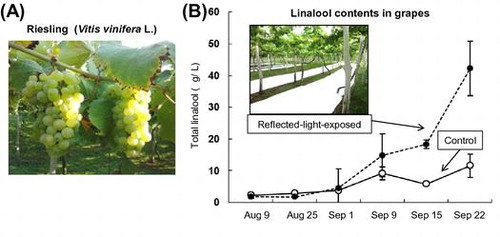
Fig. 1. Representative genes in MEP and MVA pathway.
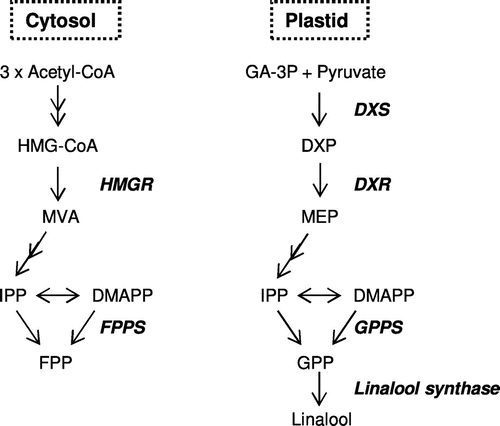
Fig. 2. Organ-specific accumulation of linalool and genes involved in terpenoid biosynthesis.
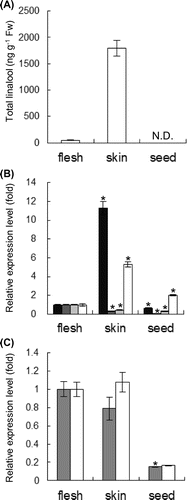
Fig. 3. Effects of light reduction on linalool accumulation and expression levels of genes involved in terpenoid biosynthesis.
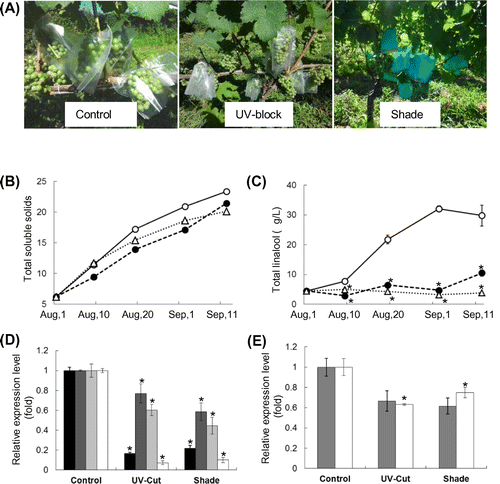
Table 1. Light exposure condition of Sauvignon blanc clusters covered with films.
Fig. 4. Effects of reflective sheets on total linalool accumulation and expression levels of genes involved in terpenoid biosynthesis during 2012 growing season.
